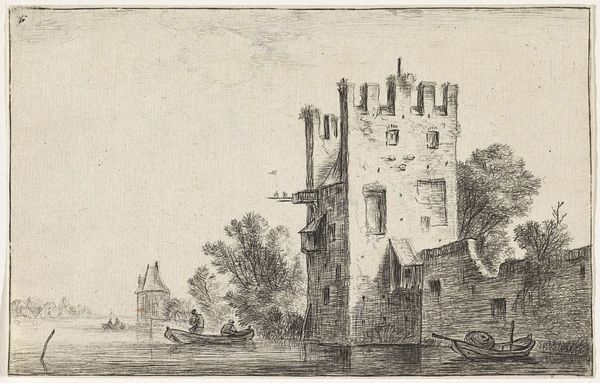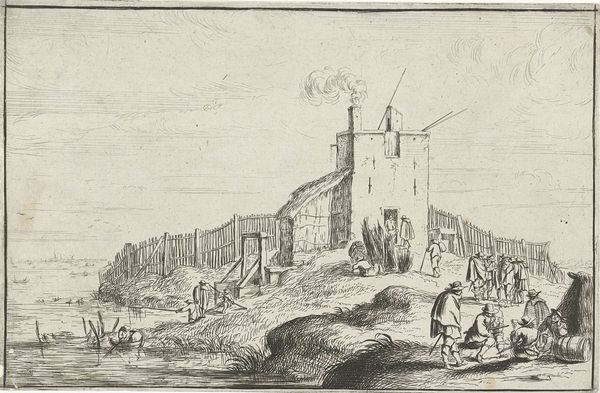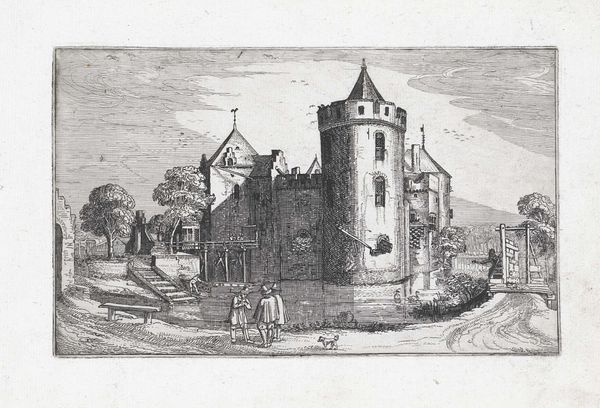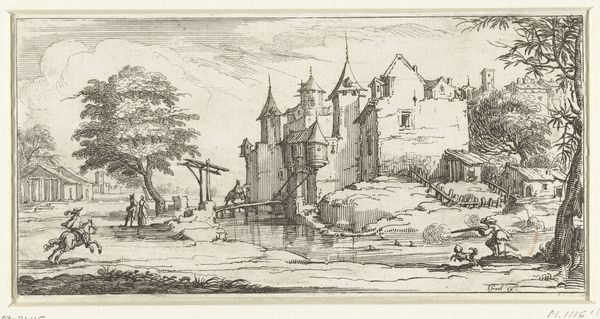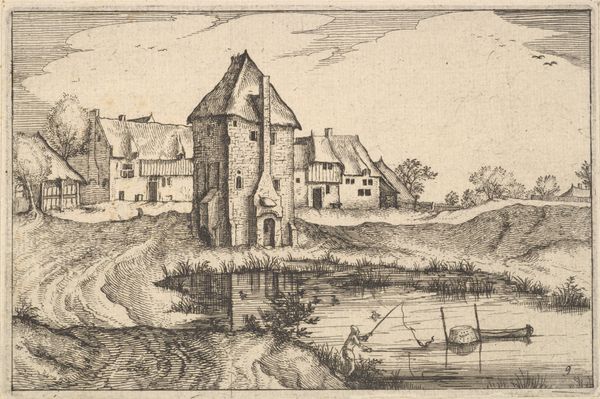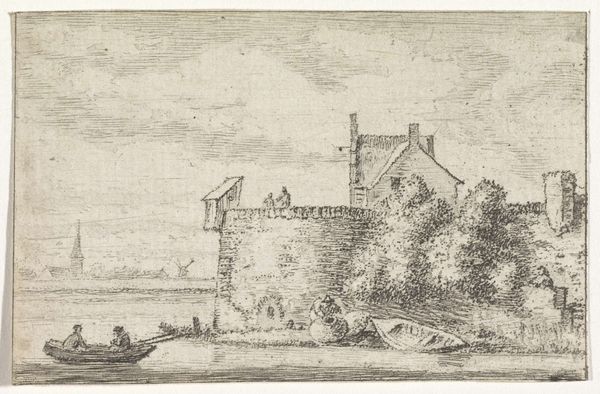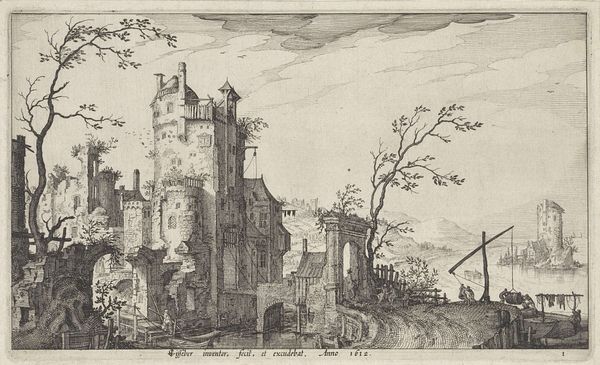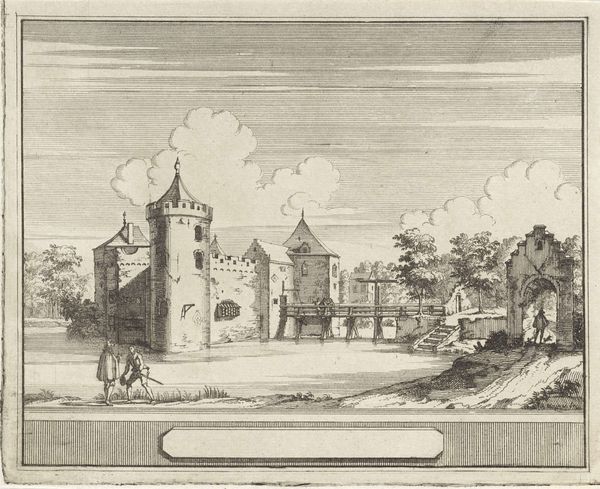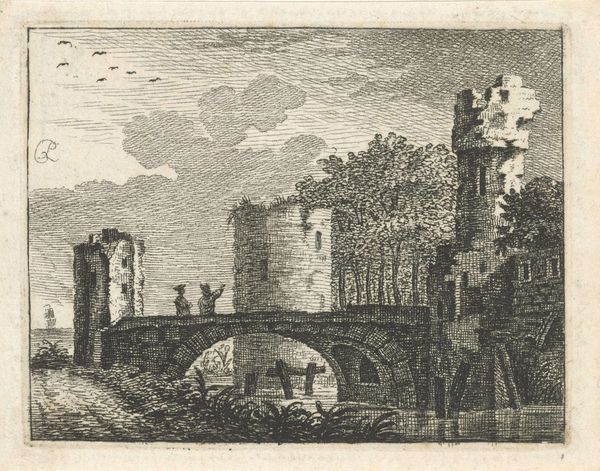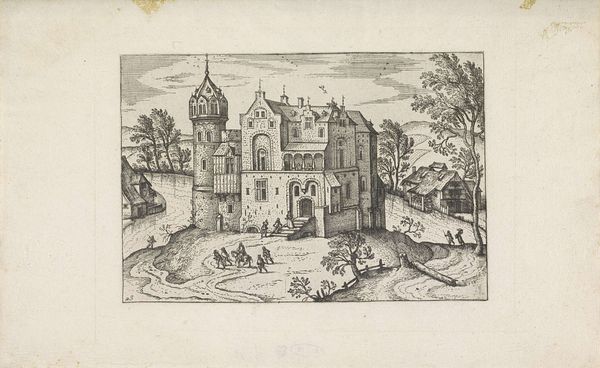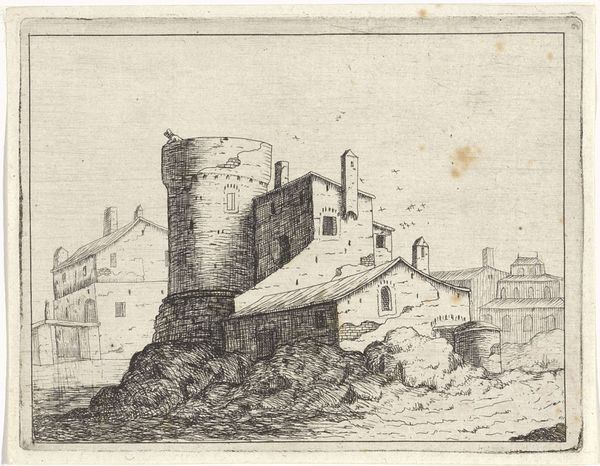
drawing, print, etching, paper, ink, engraving
#
drawing
#
aged paper
#
baroque
#
dutch-golden-age
#
mechanical pen drawing
# print
#
pen sketch
#
etching
#
old engraving style
#
landscape
#
figuration
#
paper
#
form
#
personal sketchbook
#
ink
#
sketchwork
#
pen-ink sketch
#
line
#
pen work
#
sketchbook drawing
#
cityscape
#
sketchbook art
#
engraving
#
realism
Dimensions: height 143 mm, width 214 mm
Copyright: Rijks Museum: Open Domain
Curator: Here we have Johannes Leupenius's etching from 1668, "Kasteel Loenersloot," currently held at the Rijksmuseum. Editor: There's a stark, melancholic atmosphere to this Dutch landscape. The castle looms large, yet seems vulnerable, reflected imperfectly in the water. Curator: It's fascinating to consider the power dynamics inherent in such a depiction of property during the Dutch Golden Age. Castles served as symbols of authority, wealth, and control, so the choice to focus on this particular building must be seen through a social and political lens. Editor: Precisely. Look how the light catches the upper portion, creating the impression of a heavenly space above a scene with a couple figures; the building looms large over a body of water and the inhabitants present in it. Notice the old engraving style is very prominent, but how does this visual imagery relate to our cultural memory and continuity? Curator: What I find most evocative are the seemingly insignificant figures in the boat and on the shore. What's striking is the man on the shore sitting idly—detached from the implied nobility and social significance that we give to this period of wealth. This detail suggests a deliberate attempt to depict social inequality—how ordinary people relate to these spaces. Editor: I think those are more common figures or allegorical ones instead, the one inside of the boat evokes Charon perhaps? It's the classic figure that caries people across a body of water; also notice that there isn't any direct path or road to the door; it's mostly only possible by boat. Is that a social allegory of inaccessibility and separation? Curator: That's an astute observation. Leupenius gives us much to think about in this piece regarding privilege and inclusion, ownership, and access. Editor: It certainly leaves an impression on one to delve into the artist's choice of symbology and his choice of subject; the implications are deeply rich to unpack even after all these years!
Comments
No comments
Be the first to comment and join the conversation on the ultimate creative platform.
